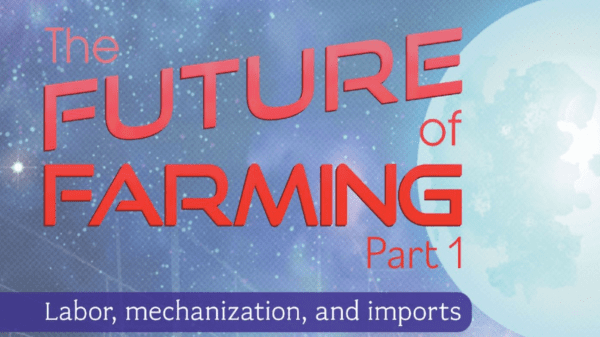The produce industry has a future. That is certain. Human beings have been eating fresh fruit and vegetables for as long as anyone can tell, and that will continue for as long as anyone can foresee.
What the future of this industry will be like in the United States is another question.
This online series on the future of farming, will attempt to get some handle on the issue by looking at three major factors: labor, mechanization, and imports. These factors, along with others, are interconnected with labor as the linchpin.
The industry relies on a large supply of human labor, largely composed of foreign workers, many of them undocumented. The status and availability of these workers are a central concern to practically everyone in the industry.
Shortages and uncertainties in the labor market have left many groping for solutions through mechanization.
Some advances have been made, but mechanization has not advanced for most fresh fruits and vegetables to anything like the extent it has for the major commodity crops of the Midwest, or, for that matter, processing tomatoes.
This brings in the third factor: imports from other nations, mostly in Latin America, where labor costs are much lower.
The interdependence of these three factors will dictate much of the future of the industry.
Philip Martin, a professor at the University of California at Davis, who is the nation’s leading expert on farm labor, agrees: “Labor-saving mechanization replaces workers, mechanical aids make guest and U.S. workers more productive, and imports can substitute for some domestic production.”
This is an excerpt from the cover story in the November/December 2022 issue of Produce Blueprints Magazine. Click here to read the whole issue.



